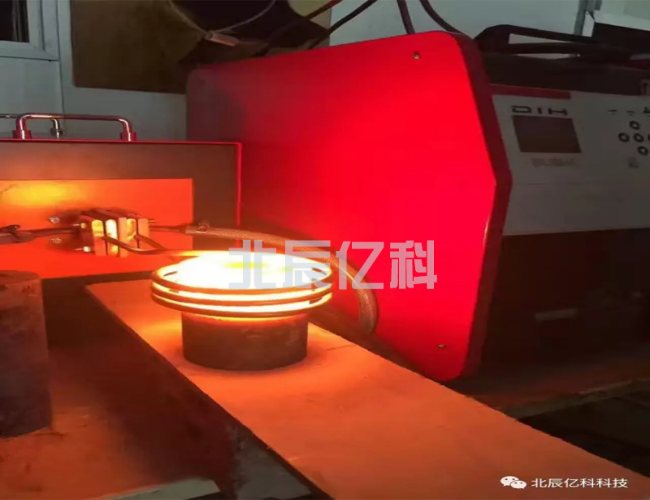Technology Exchange
Steel rod diathermy
Forging: Forging refers to an object produced by forging metal in a red-hot state through air hammers or presses and other equipment. To put it bluntly, forging is to soften the metal of the object into a shape. Forging can ensure the continuity of the metal fiber structure, keeping the fiber structure of the dagger consistent with the shape of the forging, the metal streamline is complete, the structure is dense, and the mechanical properties are good. (Quoted from Baidu Encyclopedia)
Forged objects have high hardness, sharpness and wear resistance. Good texture, good corrosion resistance, can ensure that the object has good mechanical properties and long service life. The forging process itself has many advantages, and it is also a very mainstream production process that is used in many fields. Just because forging has so many advantages in production, forging technology is widely used in aviation parts, marine parts, diesel engines, petrochemicals, heavy machinery, high-quality cutting tools, and hardware processing.
The above gave us a detailed introduction to the forging process, but it has not mentioned how diathermy is. Careful readers have found that the above mentioned "forging refers to the metal passing through the air hammer or in the red hot state. It is easy to understand that heating metal to a state of red heat means diathermy. At this point, readers may have a very intuitive impression of diathermy forging. And the main content we are going to talk about today is not in this part of forging, what we are mainly talking about today is "heating the metal to a red hot state".
The development history of diathermy technology
No matter how good a text description is, it is not as intuitive as a picture. The picture below records the scene of the hard work of the worker on the spot. This traditional production method has been retained for a long time, and until now, this original production process still exists.

With the development of the times and the continuous progress of our manufacturing process, this production method is not only inefficient and wastes resources, but also is accompanied by serious environmental pollution problems. For the majority of entrepreneurs, if you fall behind, you will be beaten. Maybe everyone will not have a deep understanding, because after all, no one beats you. But for companies, efficiency and cost have always been the lifeblood of the company, so the induction heating power supply, a diathermy tool that is more in line with modern production, came into being. The following picture shows the application of induction heating power supply in diathermy.

Comparison of induction heating method with other heating methods
In the second part of the article, we introduced the traditional coal heating furnace and induction heating power supply respectively. So what is their performance in actual production? I will give you an introduction from their respective advantages and disadvantages.
Coal heating furnace:
As the earliest heating method, compared with modern heating technology, traditional coal heating furnaces really have no advantages. If you have to judge the fittest, the advantages of coal heating furnaces are that they are low cost and can be built at will; their shortcomings are also very obvious, such as: huge energy waste,
Poor working conditions at the production site, inability to quantify the heating temperature, greater environmental pollution and emissions, and greater safety hazards.
The advantages of induction heating power supply are: fast heating speed, low energy consumption, clean energy, and can be easily used for flow operations.
From the above comparison, we know that the method of diathermy in coal furnaces has basically been eliminated, so we won't make too many conclusions. As for the induction heating method, the heating speed is very fast, and it does not need to be heated in advance, and it can be turned on as soon as it is used. Since the induction heating method uses the electromagnetic induction principle to heat the workpiece itself, compared with the heat transfer method of heat exchange, it greatly improves the energy utilization rate. Basically all the energy is converted to the workpiece that needs to be heated, so the energy conversion rate Very high and very energy saving.
Case Studies:





 Scan and follow!
Scan and follow!